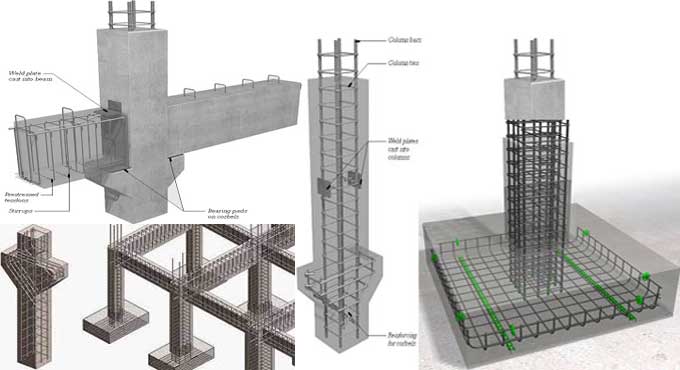
Design of RCC Structures with Different Types of Slabs
Buildings cannot function properly without reinforced concrete slabs. Modern Buildings incorporate it as a structural element. Floors and ceilings typically construct from RCC slabs that have a thickness between 10 and 50 cm. paving the exterior of a building can also be done with slabs of thin concrete.
Concrete slabs, supported by foundations or directly on the subsoil, are often used to build ground floors in residential and industrial buildings. Floors and ceilings of skyscrapers are formed by slung between steel frames by precast concrete slabs.
Structural Design of Various Types of Slabs & their Reinforcement
There are several options for strengthening a suspended slab. All surfaces are flat on top but curved on the underside.
Steel corrugated tray used for pouring concrete. The slab is thus reinforced and prevented from bending under the weight of itself. Along the short dimension are corrugations running side to side. This slab has one direction of considerable additional strength due to its ribs. You can add strength in both directions with a waffle slab.
Design of reinforcements
A unidirectional slab is structurally sound in the shortest direction. The structural strength of a two-way slab is two-fold.
Construction
Prefabricating & pouring concrete in situ are the two options for casting concrete slabs. A factory may cast prefabricated concrete slabs, which are transported to the construction site and lowered into place between steel beams or concrete beams.
There are several types of pre-or post stressing methods, as well as un-stressing. It ensures that the support structure is built to the proper dimensions to avoid fitting slabs over the support structure.
A reinforced concrete slab is constructed by placing reinforcing steel bars inside the formwork and pouring concrete over the reinforced steel bars. The plastic-tipped metal uses to prevent the reinforcing steel bars from becoming encased in the concrete during setting or plastic bars chairs to hold the bars in place.
Formwork
Formwork used to build concrete slabs in situ on the building site. Pouring concrete into a Formwork setup is the process of constructing a slab. Various slab types have different forms.
Ground slab Formwork may consist only of sidewalls pushed into the soil. But for suspended slabs, a tray-shaped Formwork is often used, often supported by a temporary scaffold.
Materials for Formwork
Wooden planks and boards use, as well as plastic or steel formwork. These days, plastics and steel find on commercial building sites due to their low labor cost. When laying a concrete path in a garden, wooden boards use on low-budget sites.
It is possible to remove or leave the wood in place permanently after the concrete has been set. Some base slabs can be built without formwork when the wall encloses the slab, acting as the walls' sides and the hardcore as its base.
Span or Effective Depth Ratios
The minimum effective depth is the span / (basic ratio x modification factor.
If slabs deflect excessively, ceilings, floors, and other architectural details can be damaged. This can be avoided by setting limits on the span or effective depth ratios.
Beams also have these limits. Due to the slenderness of the slab, the restriction on the span-depth ratio becomes more significant, and this can go a long way to determining how deep the slab needs to be in terms of the span or effective depth.
Two Direction of Solid Slab Spanning
Spans of the slab reinforce by placing the steel farthest from the axis of the structure to create the greatest depth while bars run in parallel to the spans. By using shorter spans and identifying how much reinforcement is in the direction, you can calculate the depth of the spans.
Loads will span equally in both directions if the slab is square, the restraint is the same on all four sides, and the slab is square. A rectangular slab will carry more than half the load in the closest direction and fewer loads in the farthest.
It is more efficient to design a slab to span in both directions when it supports all four sides. The ratio of the two spans and conditions at each support, the moment of bending in each direction will differ. The slab could design as if it spans in only one direction. If one span is so long, it exceeds the other by a large amount. The coefficients tabulate in the code are usually used to calculate the span portions in each direction.
To get more details, watch the following video tutorial.
Video Source: nptelhrd


